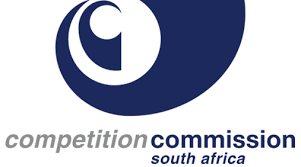SINCE the Competition Commission released its March 2025 edition of the essential food pricing monitoring report, I have seen a lot of questions on social media about what the commission considers excessive pricing and how it determines such.
Although both refer to anticompetitive conduct, it is important to first make a distinction between two economic terms — excessive pricing and price gouging. For the benefit of many who might not be able to comprehend this dichotomy, I have taken the liberty of demystifying these two important concepts.
Price gouging refers to the act or instance of excessively increasing prices or charging high prices to customers for goods or services when demand is high, and supplies are limited such as during a national disaster. In SA, this anticompetitive conduct was widely observed during Covid-19 as the prices of masks and hand sanitiser increased dramatically right after lockdown was announced.
Excessive pricing occurs when a dominant firm charges a price that is excessive when compared to an appropriate competitive benchmark.
Now, let’s understand what the Competition Act 89 of 1998 (as amended) says about excessive pricing, in particular. Sections 8(1)(a), 8(2) and 8(3) of the Competition Act stipulate that it is prohibited for a dominant firm to charge an excessive price to the detriment of consumers or customers.
The act also outlines how our team of experts should determine whether a price is an excessive price, including examining if that price is higher than a competitor’s price and whether such difference is unreasonable by considering all relevant factors.
This means that when firms, customers or consumers submit a complaint of suspected excessive pricing to the commission, then our economists and analysts review the complaint and examine the price charged.
They also keep in mind factors such as price-cost margin (a comparison between the price charged for a product and the costs incurred by a firm to produce or deliver a service); the firm’s prices to customers in other geographic markets; and relevant comparator firm’s prices.
Other things they consider are the length of time the prices have been charged at that level and the structural characteristics of the relevant market, including the extent of the respondent’s market share.
Additional factors the team might consider include the impact of external factors such as natural disasters or climate change on input costs. Simply explained, the commission’s team of economists and analysts understand that the price of services and goods are influenced by several cost drivers that include operational costs such as labour or manufacturing costs. Outside factors like logistics issues, power supply or droughts can also have an impact on how a firm prices a service or goods.
This holistic analysis ensures our teams have a full picture of both the firm and the goods or services during their analysis of the alleged excessive pricing.
The commission’s processes are thorough and often the analysis of excessive pricing complaints can be complex and lengthy, but what exactly happens when the commission receives a complaint and information from consumers and customers alleging excessive pricing?
Once a complaint is received the commission will inform the business against which allegations are made and request the relevant information outlined above to allow it to investigate the allegations.
The commission’s analysts will review the complaint and by applying the relevant factors be able to determine whether the price charged for a product or service is excessive.
Once the investigation is concluded, the commission will do one of the following: refer the matter to the competition tribunal for prosecution and adjudication; enter into a consent agreement or undertaking with the parties; or non-refer the matter.
By Siyabulela Makhunga- spokesperson for Competition Commission

